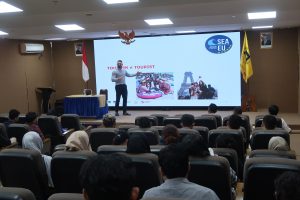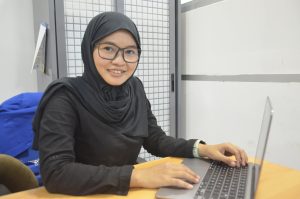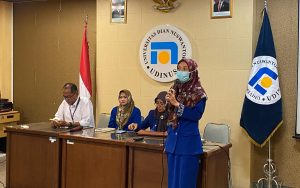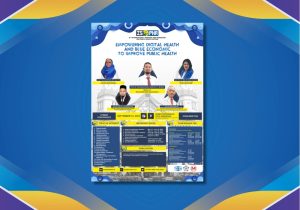Ahmad Thoriq Mubarok – Biomedical Engineering Student at Udinus
The medical sector needs an expert in designing, particularly in designing medical devices. Ahmad Thoriq Mubarok, a Biomedical Engineering Student at Universitas Dian Nuswantoro (Udinus), is currently pursuing his way to master the Medical Design Field. According to Thoriq, becoming a medical designer was among many things he could do to improve the quality of the medical sector.
“Currently, Indonesia still imports many medical techs from other countries. This need for medical techs lured me to be interested in this kind of stuff,” he revealed.
As a person with expertise in 3D design, Thoriq mentioned that this specific expertise of his helped him visualize complex ideas, which allowed him to create realistic prototypes. Through this talent, Thoriq, a student from Cirebon, was involved in several projects, both on campus and off campus.
Getting Involved in Various Projects
During the fifth semester, he was accepted to work at the Integrated Digital Design (iDIG) Laboratory Surabaya as an intern. During this internship program, there were several projects in his hands, including a Cranioplasty Mannequin. The project was conducted from the designing stage up to the prototype production. The mannequin was designed using the Blender and 3 Matic programs, which allow 3D Printing.
“This mannequin helps surgeons during the preoperative stage before surgery. Before working on this project, we were interviewed by a nerve surgeon from the UNAIR Hospital Surabaya. The project started with a rough design of an ergonomic mannequin shape. Upon deciding the shape of the mannequin, the design, particularly the skull, was printed using 3D printing technology, while the brain was mainly comprised of silicon. After everything was set, we stepped to the next step, producing implants,” he uttered.
In addition, Thoriq also worked on other projects, including surgery devices, a mannequin for cataract patients, and prosthetic limbs. Meanwhile, Thoriq, born in 2003, worked on campus projects, namely, spirometer, phantom, and a simple segmentation using the Matlab app.
“I also once worked on a non-medical project, including designing a sensor and box for a ship, producing a hammer and twinge for a water gun, and producing the prototype of urinoir toilets,” he continued.
Thoriq, who was also a member of the Dinus Innovation Design Community (DID.CO) and the Wartadinus Campus Pers, claimed that the success of his projects was a product of support given by the Engineering Faculty at Udinus. Furthermore, Thoriq also encouraged his fellow students who pursue the medical design field to keep in touch with the problems at hand.
“Learning the basic human anatomy and 3D designer devices are a must, and don’t forget to be informed concerning medical technology. Thus, you can produce your medical innovations one day,” he concluded. (Humas Udinus/Ika. Foto: Dok. Pribadi)







